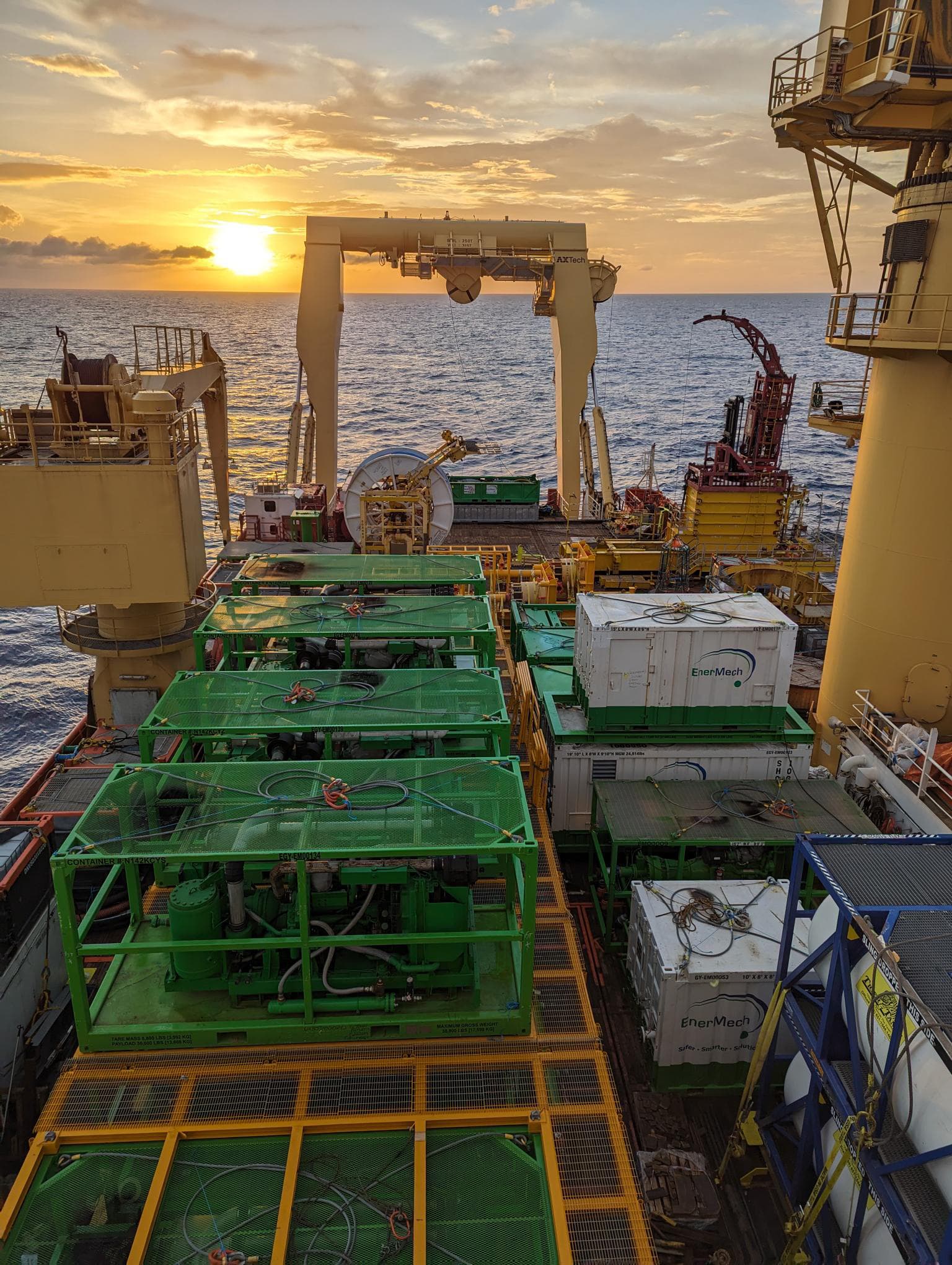Preparing export pipelines for offshore startup requires careful planning, advanced technology, and precise execution. This article explores how EnerMech successfully completed pre-commissioning on two major export pipelines, one gas and one oil, spanning over 150 miles and descending to depths of 9,000 feet. Brennon Fitzgerald, EnerMech’s General Manager – Process and Pipeline, shares key insights into the project’s challenges and the innovative solutions that ensured a safe, efficient, and timely startup.
By managing both technical execution and project logistics, such as vessel chartering and vendor co-ordination, EnerMech ensured this complex project was completed efficiently within a compressed timeline. Operating from our Houston base with up to 40 offshore specialists, meticulous planning and innovative technology underpinned seamless co-ordination between our engineering and operations teams. The project demanded a holistic approach, from equipment fabrication and vendor coordination to complex pre-commissioning tasks, streamlining workflows and reducing risk. For the gas export pipeline, not yet tied into the platform riser system, the team used coiled tubing to introduce nitrogen subsea, a tailored solution that overcame connection challenges. For the oil export pipeline, dead oil was used for dewatering, eliminating the need for nitrogen but requiring customized piping and equipment to integrate with the platform.
A key technical challenge was dewatering the gas export line with high-purity nitrogen. To meet this, a nitrogen membrane spread separated oxygen from air to achieve purity above 95%. Seventeen air compressors fed advanced membrane units, producing nitrogen initially at low pressure (350 psi), then boosted subsea to 3,800 - 4,000 psi via booster compressors to maintain a flow rate of 10,000 SCFM. The membrane system’s separation efficiency of over 55% minimized the equipment footprint, a critical advantage offshore where deck space is limited, enabling efficient fulfilment of the high-pressure demands.
Both pipelines required thorough cleaning and pressure testing before operation. Pig launcher-receiver units managed pipeline inspection gauges (pigs), while a remote flooding console introduced filtered seawater subsea. At 9,000 feet depth, natural subsea pressure (~3,600 psi) propelled pigs through the pipelines. Hydrotesting was tailored: the oil pipeline was tested topside via triplex pumps delivering 360 gallons per minute, while the gas line used an ROV-powered triplex pump for subsea pressure control.
Dewatering differed by product. The oil pipeline used dead oil displaced by a three-pig train separated by monoethylene glycol (MEG) to condition the line. The gas pipeline required subsea nitrogen introduction via coiled tubing, with pigs and pig trackers providing real-time monitoring along the 100-mile route. Multiple vessels coordinated these activities, completing all pre-commissioning tasks in just 20 days.
Behind the swift execution was nearly eight months of detailed planning and engineering, designing compact nitrogen systems and deployment workflows to optimize efficiency and mitigate offshore risks like vessel space limits, harsh weather, and high subsea pressure. Managing ambient temperatures on the dewatering vessel ensured consistent equipment performance.
This project highlights key lessons: advanced technology like high-efficiency nitrogen membranes and ROV-powered pumps can overcome complex offshore challenges; comprehensive project management across vessels and teams reduces timelines and risk; and flexible, tailored approaches ensure pipelines are ready for startup on schedule. As offshore projects grow more complex, these insights offer a valuable model for future pre-commissioning success.
